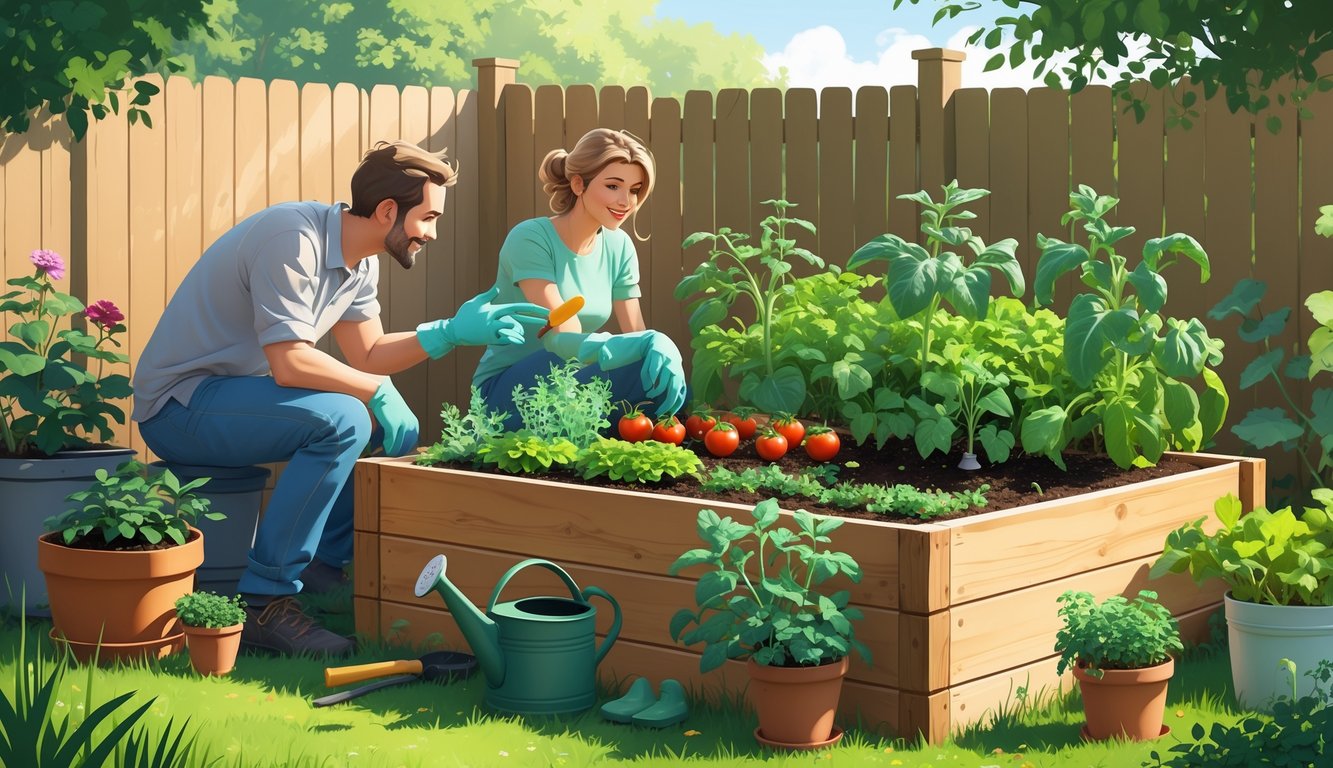
Smart Planting Strategies for Bigger Savings
How do I run out of salad greens so fast? I swear I plant enough, but nope. The secret isn’t luck or some high-tech gadget. It’s just planning, doing math with seed packets, and, I guess, a little bit of stubbornness.
Succession Planting and Crop Rotation
Crop rotation—who actually gets excited about that? No one’s posting their spreadsheets with “squash after beans after cabbage” on Instagram. Still, switching up plant families every year? It really does cut down on diseases and pests, and you end up saving money you’d otherwise spend on fixing disasters. Susan Mulvihill (she’s basically the garden whisperer) says it’s the best way to dodge over-fertilizing. I ignored her once. Paid for it in sad, tiny lettuce for three years.
Succession planting is even more of a circus. Radishes every ten days, squeezing spinach in after the peas—there’s always something to pick, but sometimes I get tired of the constant shuffle. Still, better than staring at empty beds. Those Gardening Channel folks swear by making plant lists and marking actual dates, but I lose track and just wing it half the time.
Maximizing Growing Space and Plant Spacing
I’ve jammed so many plants into my 4’x8′ beds you’d think I was prepping for an apocalypse. Too close, though, and everything gets sick—basil wiped out in one humid week, lesson learned. Spacing matters. Seriously, use a $4 grid or just poke holes in cardboard and stop guessing.
But get this: go vertical. Trellis the peas, beans, even cucumbers. Suddenly, that tiny bed is a jungle. Farmstand’s tips mention tucking quick crops under slow ones—radishes under tomatoes, for example. It works. I plant lettuce between tomatoes and, yeah, it looks wrong, but the shade keeps it going longer. If only I could keep the neighbor’s cat from flattening my spinach.
DIY Tips for Cutting Costs and Boosting Yields
I’ve got lumber scraps everywhere, but somehow I’m always short one board. Measure before the store run? Never happens. Every DIY bed ends up teaching me how to waste money. What actually saves cash? Usually not the Pinterest-perfect stuff.
Sourcing Materials Economically
Cedar boards at full price? Not happening. Those prefab composite kits? Also nope. I raid construction scrap piles, grab pallets (skip anything labeled “MB”—toxic, apparently), and ignore garden center “bed kits.” That’s how you save 40% or more, which BBC Gardeners’ World hints at if you read between the lines.
Oh, and screws cost more than you think. I scrounged through my dad’s jar of old, mismatched screws—worked fine. In my area, reclaimed wood for a 4×8 bed costs under $20. Don’t blow your budget on imported soil either. Layer up with whatever organic junk you can find locally, and you’ll have enough left for coffee. Tried zip ties once—total fail.
Making Use of Organic and Local Resources
Mulching season: I’m out there at sunrise, raking up my neighbor’s pine needles, hoping they don’t catch me. Everyone calls it “free organic matter,” but my back disagrees. The trick? Lasagna layering—dump leaves, grass clippings, coffee grounds, half-rotted compost, whatever. Ignore the purists, it all breaks down.
Jenna Rich at Epic Gardening spells it out: skip the fancy bags. The real savings come from grabbing coffee grounds from bakeries, dragging home rotted logs, and pretending your kids aren’t grossed out by the worm bin. If you can’t find local freebies, maybe the problem isn’t your garden. Also, rain barrels are overpriced, but I’ll save that rant for another day.
Ongoing Maintenance and Seasonal Care
Dandelion season hits, and I’m trying to remember if I mulched last fall or just forgot. Ignore soil amendments, skip mulch, let weeds take over—suddenly, you’re spending all your money and weekends fixing messes you could’ve avoided.
Mulching and Weed Control
Someone on Reddit swears by cocoa hull mulch, but then my neighbor freaks out about dogs eating it, so I stick to bark or last year’s leaves. If I don’t keep a two-inch layer (yes, I actually measure), crabgrass takes over by July. Organic mulch really does help—keeps the soil cooler (DripWorks blog says 20% less water loss), and blocks weeds before they get nasty.
Plastic mulch? Supposed to be a time-saver, but water beads up and my tomatoes wilt. Tried cardboard, forgot to poke holes, and drowned everything. My advice: start early, accept the mess, and know that weeds hate persistence more than precision. It’s never pretty, but it works.
Fertilizing and Soil Renewal
Nutrient cycling? Sounds technical, but if you skip it, you get sad tomatoes. Lyngso Garden says to top up organic matter every spring and late summer—no, not “sometimes,” but on schedule. Compost, manure, worm castings—just rough up the top couple inches and toss it on.
Most “organic” fertilizers (blood meal, kelp meal—yeah, they stink, but it fades) need to match what your soil’s missing. I dumped bone meal everywhere once—ended up with yellow plants. Test first, then add as needed. Plant green manure cover crops like clover every fall. Sure, it means more mowing, but I spend half as much on amendments and my plants actually look healthy.
I keep a notebook full of “Don’t overdo nitrogen, dummy” reminders. Tracking what I add each year beats guessing. It’s messy, but it keeps the soil from crashing. Test your soil if you’re sick of disappointment. Everyone skips it at least once—we all regret it.